Vedas: The Sacred Scriptures of Hinduism
Hinduism, one of the world’s oldest living religions, is steeped in profound spiritual wisdom and a rich cultural heritage. Central to its intellectual and devotional fabric are the Vedas—four ancient scriptures known as the Rig Veda, Yajur Veda, Sama Veda, and Atharva Veda. These texts not only provide ritualistic guidance but also embody deep philosophical insights that have shaped Hindu thought for millennia. In this comprehensive article, we explore the origin, structure, and eternal relevance of the Vedas, as well as their influence on temple traditions and the overall cultural landscape of Hinduism.
Read More About sacred texts
In addition to an in-depth analysis of the Vedic literature, this article includes a detailed look at select temples where Vedic recitations and rituals continue to inspire devotion and spiritual exploration. For each temple, we delve into its name and location, historical background, architectural highlights, and the unique visitor experience it offers. Furthermore, we provide actionable ideas and references for creating captivating AI-generated images that visually narrate the timeless beauty of these sacred traditions.
Historical and Spiritual Significance of the Vedas
The Vedas are revered as the foundational scriptures of Hinduism. Passed down through an unbroken oral tradition, these texts date back thousands of years, with scholarly estimates suggesting their composition as early as 1500–1200 BCE or even earlier in some traditions. The Vedas have been instrumental in shaping the spiritual, philosophical, and ritualistic contours of Hindu society.
The Oral Tradition and Timeless Wisdom
Before the advent of written language in ancient India, the Vedas were transmitted orally with exceptional precision. This tradition of memorization and recitation ensured that the profound knowledge contained within these texts was preserved without dilution over generations. The Vedic seers (rishis) who composed these hymns and verses are considered to have been divinely inspired, their words resonating with cosmic truth and eternal wisdom.
“The truth is one; though the wise call it by many names.”
This oft-quoted verse encapsulates the universality and inclusiveness of the Vedic message, emphasizing the unity underlying the diverse expressions of divine truth.
Foundational Role in Hindu Philosophy and Rituals
At their core, the Vedas provide guidance for both personal spiritual practice and elaborate public rituals. They serve as a manual for:
- Ritualistic Observance: Detailed prescriptions for performing sacrifices (yajnas) and ceremonies that invoke the gods.
- Philosophical Inquiry: Early explorations of metaphysical concepts such as the nature of reality, the self (atman), and the ultimate principle (Brahman).
- Ethical Living: Timeless teachings that offer moral and ethical guidance for leading a righteous life.
The multifaceted nature of the Vedas has made them a dynamic source of inspiration for scholars, sages, and seekers alike. Their influence spans across various domains—from literature and art to music and architecture—affirming their integral role in the cultural continuum of Hindu civilization.
The Four Vedas: A Closer Look
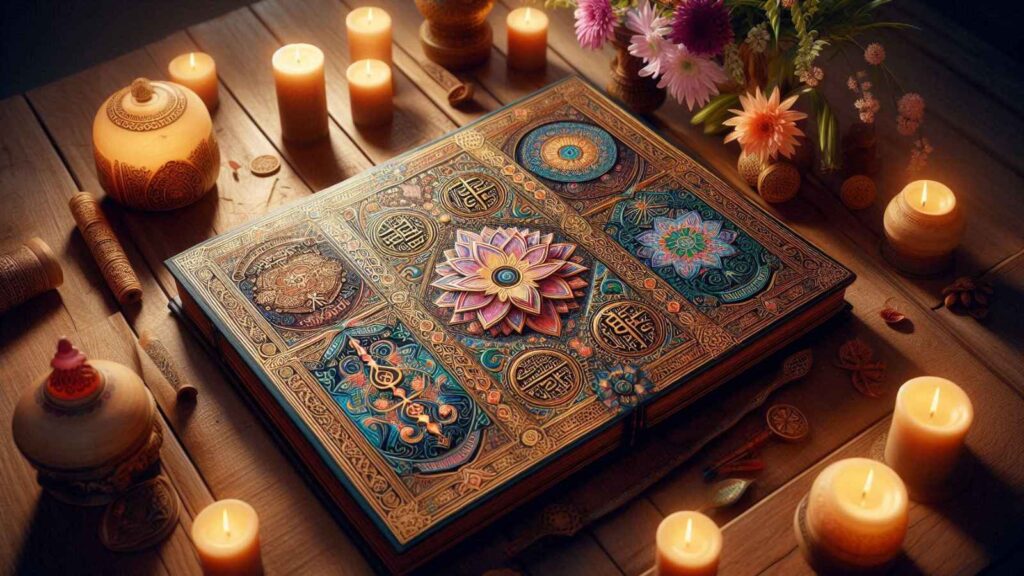
The Vedas are traditionally divided into four categories, each with its distinct focus and contributions to the sacred corpus of Hindu literature. Below, we explore the unique characteristics and contributions of each Veda.
1. Rig Veda
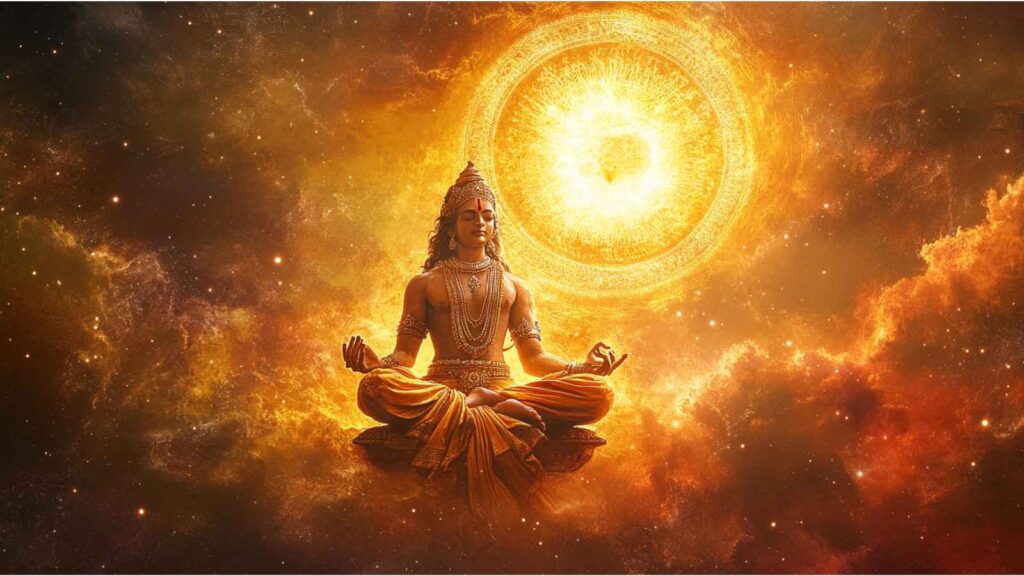
Overview
The Rig Veda is the oldest of the four Vedas and comprises a collection of hymns (suktas) dedicated primarily to various deities. It consists of nearly 1,028 hymns organized into ten books (mandalas). These hymns are revered not only for their poetic beauty but also for their theological depth.
Spiritual and Ritual Significance
- Invocation of the Divine: The hymns are rich with praises for gods such as Agni (the fire god), Indra (the warrior deity), Varuna (the celestial deity), and many others.
- Cosmic Order: The Rig Veda articulates early philosophical ideas about the nature of the universe and the fundamental principles governing creation.
- Ritual Utility: The recitations from the Rig Veda form the backbone of many ancient rituals and ceremonies, establishing a direct link between man, nature, and the divine.
Notable Quote
“May we look upon all the manifestations of the Divine with unbounded awe.”
This line, resonating with the spirit of cosmic wonder, reflects the Rig Veda’s profound impact on early Hindu thought.
2. Yajur Veda
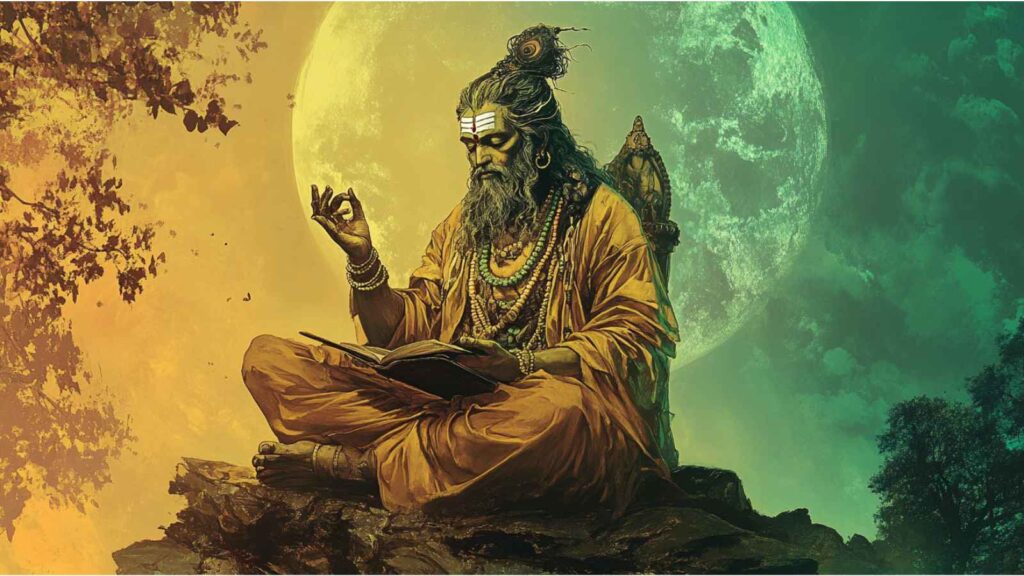
Overview
The Yajur Veda serves as the liturgical manual of Hinduism. It contains prose formulas and mantras that are recited during rituals and sacrificial ceremonies. Unlike the poetic hymns of the Rig Veda, the Yajur Veda focuses on the precise instructions required to perform rituals correctly.
Spiritual and Ritual Significance
- Detailed Ritual Procedures: It guides priests in conducting yajnas (sacrificial rites) with strict adherence to protocol.
- Symbolism in Ritual: Every utterance and gesture prescribed in the Yajur Veda is imbued with symbolic meaning, linking the physical act of sacrifice to the metaphysical realm.
- Integration of Knowledge: The text bridges the material and spiritual realms, making the rituals not only a duty but also an act of worship that transforms the practitioner.
Notable Aspect
The Yajur Veda’s systematic instructions have had a profound impact on the development of subsequent Vedic literature and ritualistic practices, underscoring the importance of precision and devotion in worship.
3. Sama Veda
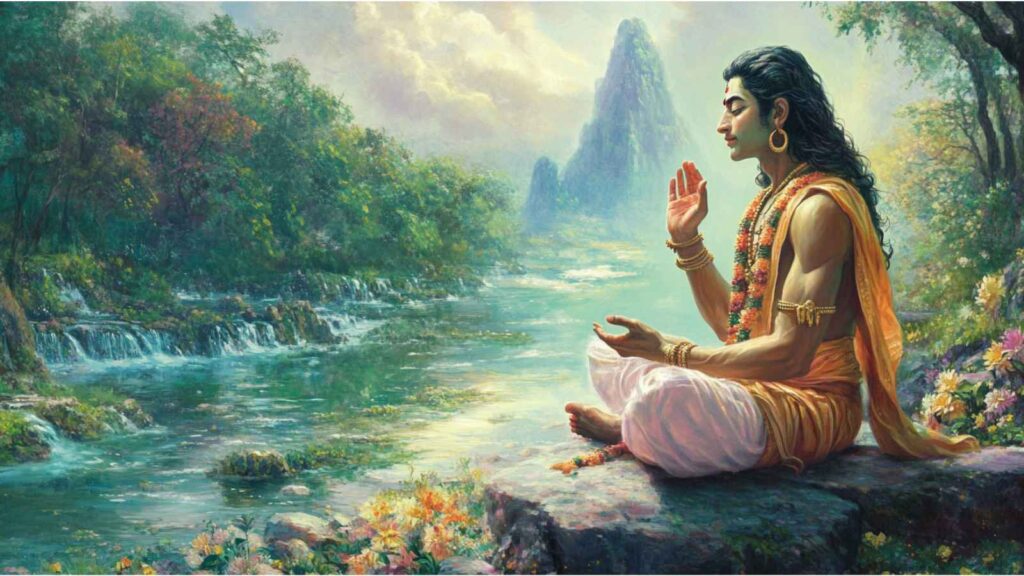
Overview
The Sama Veda is renowned for its musical quality. Often referred to as the Veda of chants, it is essentially a collection of verses derived from the Rig Veda but set to music. The melodic recitations of the Sama Veda are considered to be not only an artistic expression but also a powerful medium for spiritual elevation.
Spiritual and Ritual Significance
- Musical Tradition: The emphasis on melody and rhythm highlights the intrinsic connection between sound and the divine in Hindu thought.
- Chanting as Worship: The musical rendition of these verses transforms recitation into an immersive, meditative experience, deeply influencing the art of chanting in Hindu rituals.
- Cultural Influence: The Sama Veda has significantly contributed to the evolution of classical Indian music and dance, serving as a bridge between spiritual expression and artistic creativity.
Notable Aspect
The musical intonations of the Sama Veda remind practitioners of the vibrational nature of the cosmos, where sound is seen as a primary creative force.
4. Atharva Veda
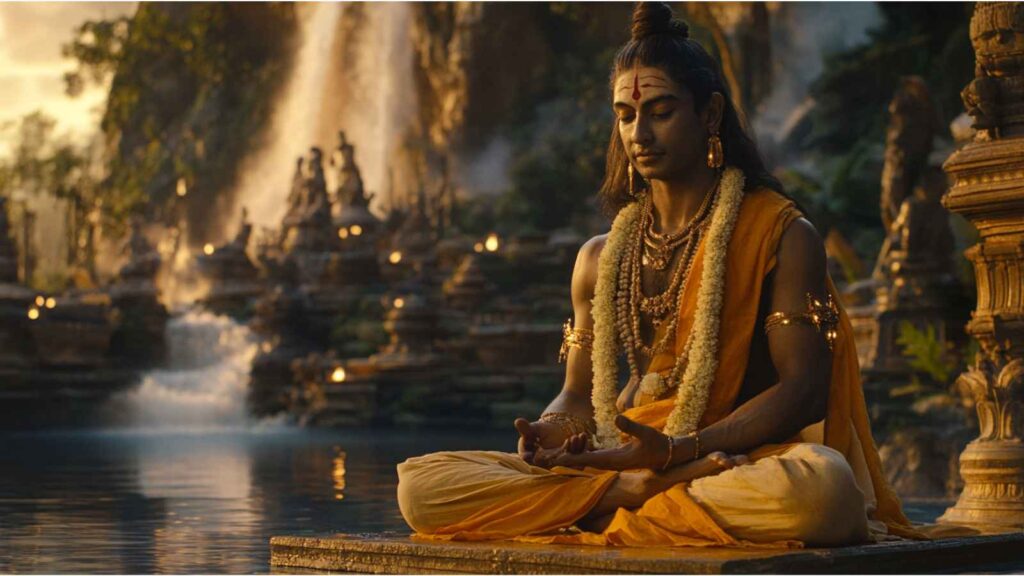
Overview
Distinct from the other three Vedas, the Atharva Veda is a compendium of hymns, spells, and incantations that address everyday life. It encompasses knowledge related to health, healing, magic, and even aspects of daily rituals that promote well-being.
Spiritual and Ritual Significance
- Practical Wisdom: The Atharva Veda includes remedies for common ailments and prayers for protection, demonstrating the pragmatic dimension of Vedic wisdom.
- Mysticism and Ritual: It explores themes of magic and mysticism, providing rituals that invoke divine blessings in the mundane aspects of life.
- Holistic Approach: The text emphasizes a balance between spiritual practices and practical concerns, reflecting a holistic approach to life that integrates the material and the metaphysical.
Notable Aspect
The Atharva Veda’s inclusion of both the mystical and the practical highlights the comprehensive nature of the Vedic worldview, wherein the divine permeates every facet of existence.
Vedic Philosophy and Its Enduring Impact
The teachings of the Vedas extend far beyond ritualistic prescriptions. They lay the groundwork for many philosophical debates and have inspired diverse schools of thought within Hinduism.
The Pursuit of Truth and Self-Realization
The Vedic tradition emphasizes the quest for truth (satya) and the ultimate understanding of the self (atman). Through the study and meditation on Vedic texts, many seekers have embarked on a lifelong journey of self-realization, exploring questions about the nature of existence, consciousness, and the cosmos. The wisdom of the Vedas continues to resonate with those who seek answers to life’s most profound mysteries.
Integration with Later Philosophical Traditions
Subsequent texts, such as the Upanishads, the Bhagavad Gita, and various commentaries by renowned philosophers, have built upon the foundation laid by the Vedas. The synthesis of Vedic wisdom with later philosophical insights has given rise to diverse interpretations and practices, all aimed at realizing the oneness of existence and transcending the limitations of the physical world.
Influence on Rituals and Daily Practices
In daily life, the echoes of the Vedas can be found in the myriad rituals, prayers, and festivals celebrated across India and among Hindu communities worldwide. Whether through the chanting of mantras during sunrise or the recitation of hymns in a temple, the Vedic tradition is an ever-present force that nurtures the spiritual life of countless individuals.
Vedic Traditions in Sacred Temple Practices
Temples in Hinduism serve as living embodiments of the sacred, where the eternal wisdom of the Vedas is continuously chanted, celebrated, and experienced. These hallowed spaces provide an immersive environment where the spiritual and material worlds intersect. Below, we spotlight a few notable temples that have long been associated with the preservation and propagation of Vedic traditions.
1. Kashi Vishwanath Temple, Varanasi, Uttar Pradesh, India
Name and Exact Location
- Temple Name: Kashi Vishwanath Temple
- Location: Varanasi, Uttar Pradesh, India
Historical Background
The Kashi Vishwanath Temple, one of the holiest shrines in Hinduism, is dedicated to Lord Shiva. With a history that spans several centuries, the temple has been a focal point of spiritual activity and Vedic recitations in Varanasi. The temple has undergone multiple renovations over the ages, each time preserving the core essence of its ancient traditions.
Architectural Highlights
- Intricate Sculptures: The temple’s architecture features elaborate carvings and sculptures that depict various deities and mythological scenes.
- Elegant Shikhara: The towering spire (shikhara) is a testament to the ingenuity of ancient Indian architects, designed to evoke a sense of awe and divine presence.
- Sacred Ambiance: The use of traditional motifs and locally sourced stone further enhances the temple’s spiritual ambiance, creating an environment conducive to deep meditation and worship.
Visitor Experience
Visitors to the Kashi Vishwanath Temple are enveloped in an atmosphere of reverence and timeless spirituality. The sound of Vedic chants during daily rituals, the aroma of incense, and the glow of oil lamps contribute to a multisensory experience that connects devotees with the ancient heritage of Hinduism.
2. Badrinath Temple, Uttarakhand, India
Name and Exact Location
- Temple Name: Badrinath Temple
- Location: Badrinath, Uttarakhand, India
Historical Background
Badrinath Temple, nestled in the majestic Himalayas, is one of the Char Dham pilgrimage sites. With its origins shrouded in myth and legend, the temple is renowned for its association with Vedic rituals and ancient Sanskrit chants. Over the centuries, it has evolved into a revered site where devotees come seeking divine blessings and spiritual enlightenment.
Architectural Highlights
- Himalayan Splendor: Constructed with weathered stone and set against a backdrop of snow-capped peaks, the temple’s design harmoniously blends with its natural surroundings.
- Elegant Interiors: Inside, the sanctum sanctorum is adorned with intricate artwork and inscriptions that echo the profound teachings of the Vedas.
- Symbolic Ornamentation: The temple’s design incorporates symbolic elements that reflect the unity of the physical and spiritual realms, a concept central to Vedic philosophy.
Visitor Experience
A visit to Badrinath Temple is more than a pilgrimage—it is a journey into the heart of ancient spirituality. The serene environment, coupled with the rhythmic recitations of Vedic hymns, offers visitors an immersive experience that nurtures both the body and the soul. The crisp mountain air and breathtaking vistas further enhance the transformative quality of the visit.
3. Somnath Temple, Gujarat, India
Name and Exact Location
- Temple Name: Somnath Temple
- Location: Prabhas Patan, near Veraval, Gujarat, India
Historical Background
Somnath Temple, dedicated to Lord Shiva, is steeped in a history marked by resilience and revival. Believed to be one of the most ancient temples in India, it has been rebuilt several times after periods of destruction. Despite the turbulent history, the temple has retained its deep connection with Vedic traditions and remains a beacon of faith and perseverance.
Architectural Highlights
- Majestic Facade: The temple’s imposing structure and intricately carved façade are testaments to the architectural prowess of ancient Indian artisans.
- Sacred Sculptures: Detailed depictions of mythological narratives and Vedic symbols adorn the walls, inviting reflection on the eternal truths of the scriptures.
- Harmonious Design: The layout of the temple, with its sanctum and surrounding courtyards, is designed to facilitate both communal worship and individual meditation.
Visitor Experience
The experience of visiting Somnath Temple is one of profound spiritual renewal. The temple exudes an aura of tranquility and timeless devotion, where the echo of ancient Vedic chants fills the air. Visitors often remark on the deep sense of connection they feel—not only to the divine but also to the enduring legacy of the Vedic wisdom that continues to inspire the faithful.
Vedic Influence on Art, Music, and Culture
The legacy of the Vedas is not confined solely to the realm of religious ritual; it has also profoundly influenced Indian art, music, literature, and culture.
The Musicality of the Sama Veda
The Sama Veda, with its emphasis on musical recitations, laid the groundwork for what would later evolve into classical Indian music. The intricate melodies and rhythmic patterns found in these ancient chants continue to influence modern musical traditions in India. Classical ragas, devotional bhajans, and temple music owe much of their character to the rhythmic and tonal innovations introduced by the Sama Veda.
Literary and Artistic Inspirations
- Poetic Brilliance: The lyrical quality of the Rig Veda has inspired countless poets and writers, both in ancient times and in contemporary literature.
- Visual Arts: Many traditional artworks, temple murals, and sculptures incorporate motifs and themes derived from Vedic narratives. These artistic expressions serve as a visual homage to the timeless wisdom of the Vedas.
- Cultural Festivals: Festivals such as Vedic recitation gatherings, music concerts, and cultural fairs celebrate the enduring legacy of these ancient scriptures, ensuring that their relevance continues to thrive in modern society.
Integration with Modern Thought
In today’s fast-paced world, the teachings of the Vedas offer a much-needed respite—a call to introspection and mindfulness. Modern practitioners of yoga, meditation, and holistic wellness often draw upon Vedic concepts to guide their practice, merging ancient wisdom with contemporary lifestyles.


